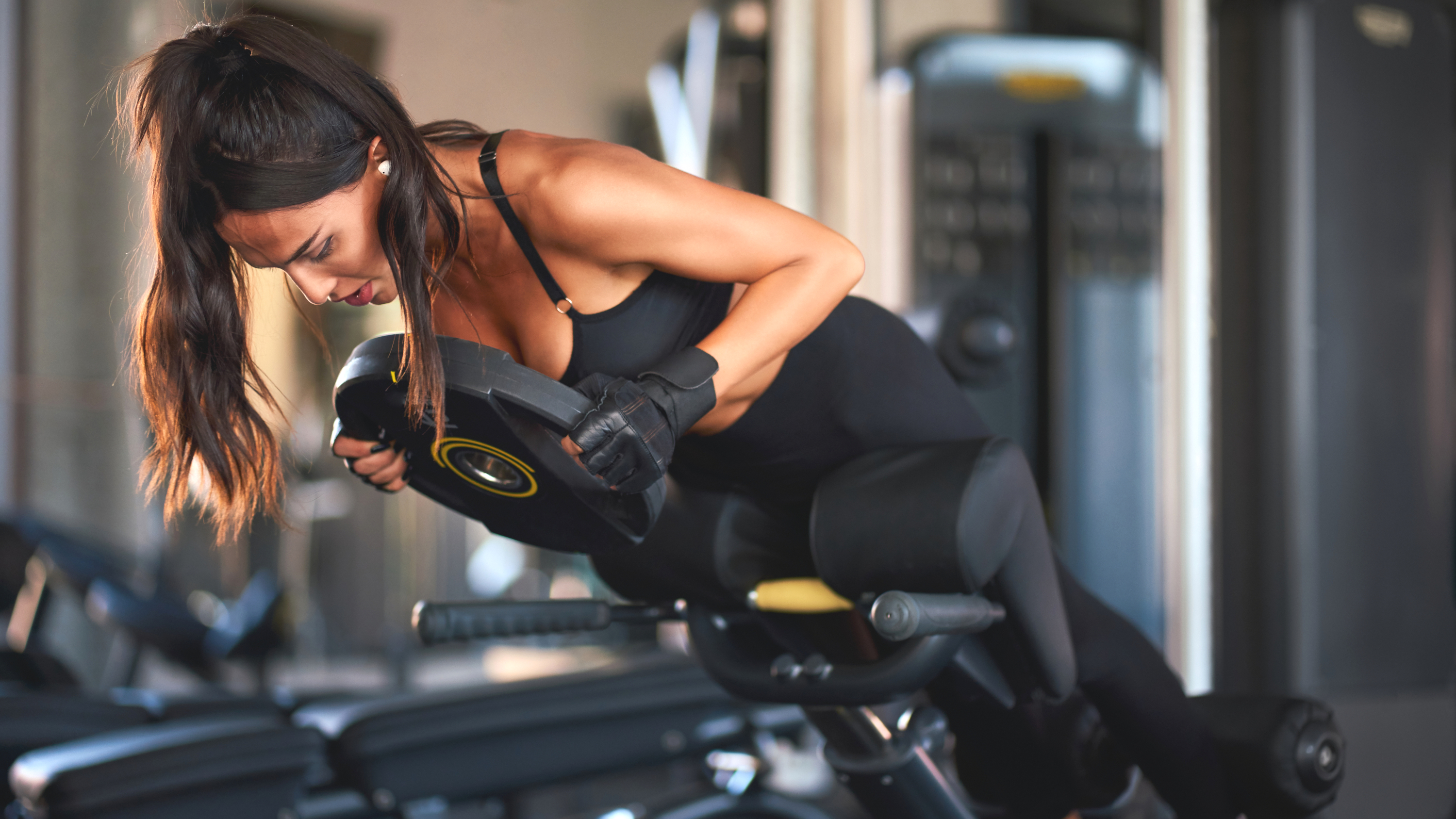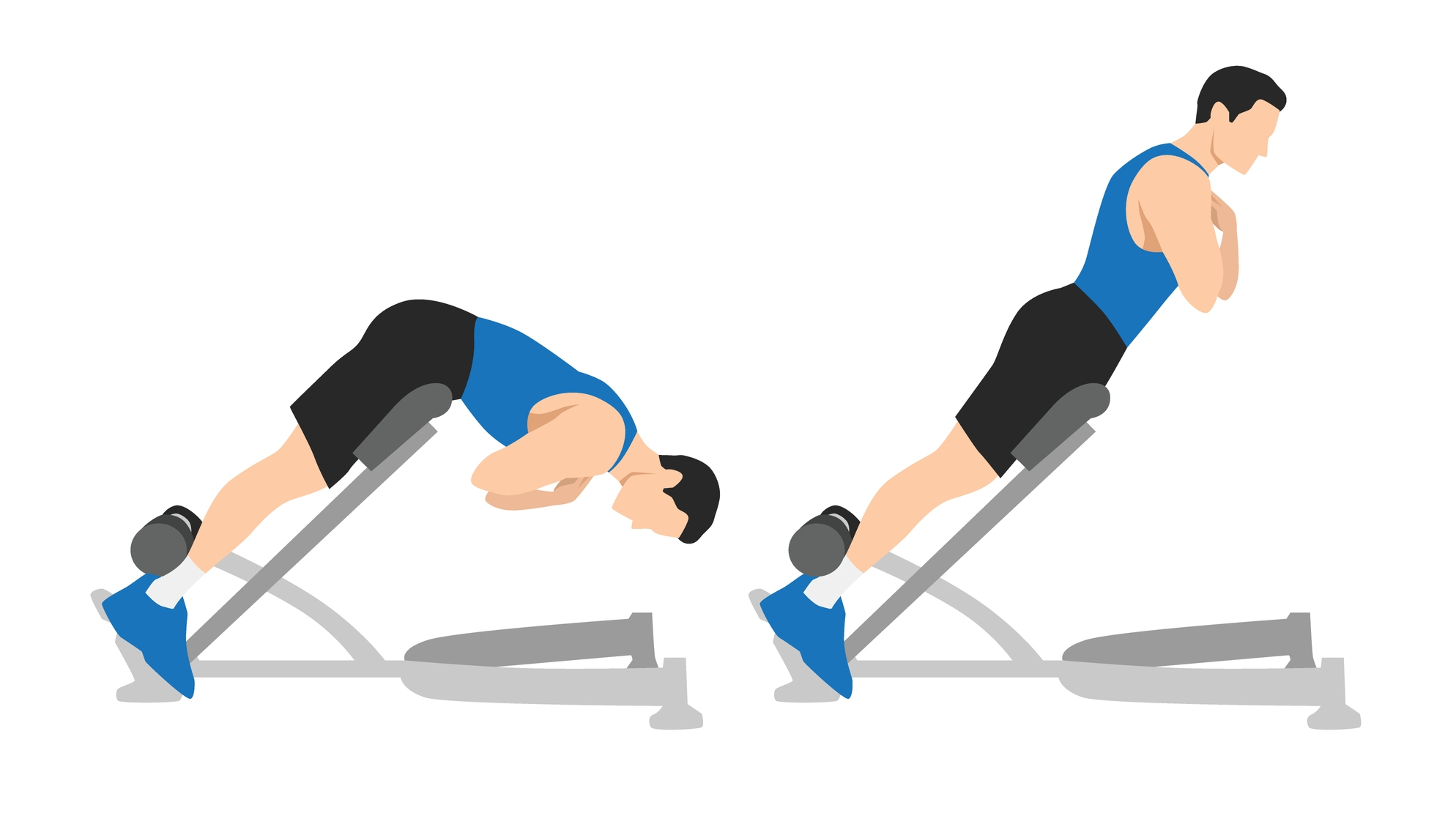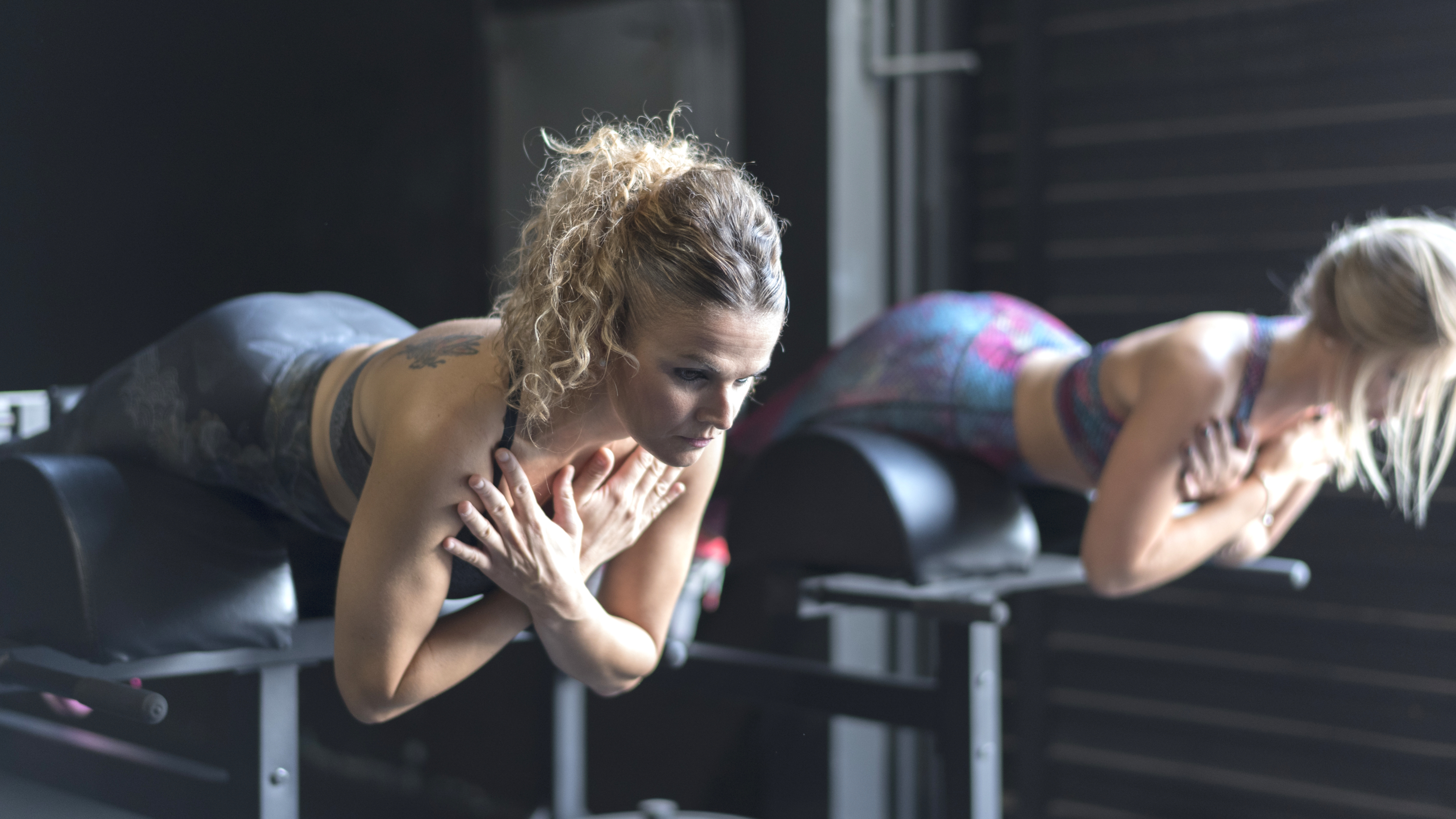
Truth be told, I much prefer training my lower body than I do my upper body at the gym. And I love it even more when I find a new exercise to add to my lower body routine. After discovering the beauty of Roman chair back extensions and how good a workout they give in the glutes and hamstrings I decided to add them to my routine every day for a week.
The Roman chair back extension is a versatile exercise that can be incorporated into various workout routines. Not only is it a brilliant glute burning exercise, but it also helps to strengthen your lower back which is great for injury prevention and for helping you out in other strengthening exercises like the deadlift. Plus it’s a great move for engaging your core.
If you are new to the Roman chair back extension or perhaps you are working on building up a good level of base strength, then starting with bodyweight only repetitions is a good place to begin. From there you can decide whether or not you feel confident bringing in some additional weight. If not you can still incorporate progressive overload into your training by increasing the number of repetitions.
I started with just my bodyweight and then felt like I could make things a little more intense by adding in a weight plate to the movement. Read on to find out what happened when I completed seven days of weighted Roman chair back extensions.
The benefits of Roman chair back extension
Firstly, as the name suggests, Roman chair back extensions targets the erector spinae muscles which run along your spine. Therefore, doing this exercise has the potential to better your posture and reduce the risk of lower back pain. However, if you suffer from lower back pain and are thinking about trying this exercise, consult a professional as this could cause further pain.
But it doesn’t all lie in the back. In fact, this is an excellent exercise for targeting your glute muscles and your hamstrings. The lifting phase of the exercise involves extending the hips, which is the primary function of the gluteal muscles. The glutes contract to push the hips forward and bring the upper body back to a horizontal position. Similarly, the hamstrings are activated to stabilize the hip joint and assist in the movement.
The Roman chair back extension also contributes to overall core strength and if you read a lot of our articles you will know that we like to highlight how a strong core is essential for maintaining balance, stability, and functional movement in everyday activities.
Lastly, the Roman chair back extension is adaptable to various fitness levels and goals. Beginners can start with bodyweight repetitions, gradually progressing to incorporate additional resistance as strength improves. The exercise supports progressive overload, a fundamental principle in muscle development, allowing you to continually challenge your muscles and promote growth over time.
How to do a Roman chair back extension

- It’s important you adjust the Roman chair to your height or else the exercise won’t work. Your hip crease should align with the edge of the pad, and your feet should be securely positioned on the footrests.
- Place your hips against the hip pad and your ankles securely on the footrests. Cross your arms over your chest or place your hands behind your head. Get ready to keep your spine in a neutral position throughout the movement and engage your core muscles to stabilize your spine.
- Begin the movement by hinging at your hips, allowing your upper body to lower towards the ground. Keep a slight bend in your knees to avoid locking them. Lower your upper body until it is parallel to the ground or slightly below.
- Initiate moving back upward by contracting your lower back muscles. Lift your upper body back up to the starting position. Aim for a full range of motion, but only go as far as your flexibility and comfort allow.
I did weighted Roman chair back extensions everyday for a week — here's what happened
Form is key
If you've never tried Roman chair back extensions before then it won’t feel very natural at all, you might even feel a bit silly (I did at first).
However, I spent time really focusing on my form in the first few sets and before I knew it could really feel the benefits of the exercise. I also found that adding in the weight plate helped me feel the movement where I was supposed to, in my glutes, hamstrings and lower back. That being said, you don’t need the weight to feel it. If you prefer working with body weight, make sure you hold the movement for a moment at the top when your back is extended and allow for time under tension.
It made for a great lower body finisher
I decided to add the Roman chair back extensions to the end of my workouts and found it to be a great lower body finisher challenge. After a session of lunges, squats and deadlifts, you can bet your bottom dollar your glutes and hammies will be feeling it.
There are some lower body exercises where I don’t look forward to the next set like Bulgarian split squats, whereas with the Roman chair back extensions, I enjoyed the burn and the movement of the exercise. This is probably because there is more support and stability involved in the back extensions. Still, there is certainly something to love about the way this understated exercise offers up a good old burn in your lower body muscles.
It’s not a popular exercise

There is nothing worse than being unable to access the equipment you require in the gym and having to switch up your routine, especially if you are following a specific plan via one of the best workout apps.
However, I discovered during this challenge that the Roman Chair is possibly one of the easiest pieces of equipment to get onto in the gym. Unlike the squat rack or the Smith Machine, I didn’t once have to ask anyone how many sets they had left on the Roman Chair or awkwardly linger nearby until it freed up. Instead, I could get on the Roman chair for my weighted-back extensions at any point of my workout.
If this isn’t the case in your gym or perhaps your gym doesn’t even provide a Roman chair then other exercises can emulate a similar effect such as Good Mornings and Supermans.
It’s great for runners
Over the years I have been guilty of switching from spending all my time in the gym to spending it just running so my main focus these days is trying to balance the two in my life to complement one another.
The more I got into the Roman chair back extensions the more I could feel how much stronger my muscles could get from this movement. For me, I especially felt it in my glutes and hamstrings, two very important muscle groups in running. Strong glutes and hamstrings play an essential role in providing power, stamina, better posture and injury prevention during running.
I did weighted Roman chair back extensions every day for a week — verdict
If you’re looking for a new lower body exercise to add to your routine and have access to a Roman chair in your gym then I definitely recommend trying Roman chair back extensions. It is a great move for targeting your lower back muscles, glutes, hamstrings and core and can be performed with just your body weight or with additional weight.
It's important to note that where you feel this exercise can vary based on factors such as form, body positioning, and individual biomechanics. For example, I found I felt this move most in my glutes and hamstrings which I liked. As a runner I need these muscles to be strong and resilient.
If you try this and don’t feel like it’s targeting the right muscles or you find it painful, always ask for help first, it may just be your form is off or that this exercise isn’t right for you.







